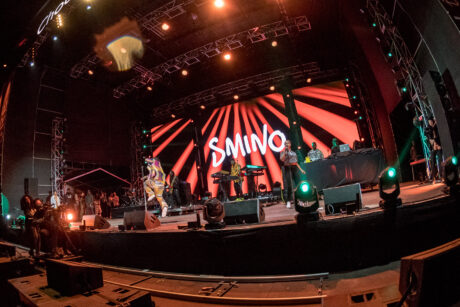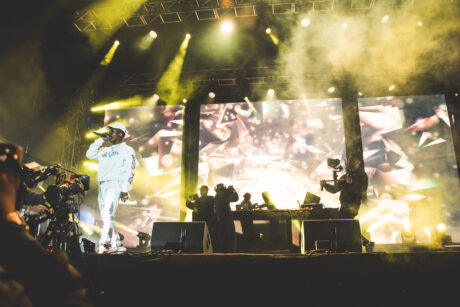
FREMONT, CA – Blackmagic Design today announced that South African music festival, Rocking the Daisies, was powered by an end to end Blackmagic Design workflow, featuring Blackmagic URSA Broadcast and ATEM Constellation 8K.
More details from Blackmagic (www.blackmagicdesign.com):
Held at the Cloof Wine Estate in Cape Town and incorporating comedy, music, art and film, Rocking the Daisies (RTD) is one of the country’s biggest festivals. Live production for the three day event’s diverse international lineup, which included The 1975, Russ, Tash Sultana and Nasty C, was delivered by production company Bad Weather.
The main stage featured three central LED screens, making up one canvas, the middle being a 6 x 6 meter square and each outer screen 3.6 x 6 meter high. There were two 5.4 meter wide by 8.4 meter high IMAGs stage left and right. “With both side screens essentially being portrait, we had to be careful with how we framed our shots, making sure that everything was centered,” reveals live director Simon Wilkes.

“We used the URSA Broadcast for acquisition; front of house we had a single camera with a very long lens and a supplementary Micro Studio Camera 4K locked off just next to the sound desk,” he explains. “In front of the stage we had a jib mounted URSA Broadcast, and another on a dolly. On stage was a roaming camera op and a handful of the micro cameras positioned in key positions for additional cutaways.”
Bad Weather’s Jonathan Bandli adds: “The image quality of these cameras was something that the festival had never experienced before; good in low light and they handled the dynamic range of a large stage with heavy contrast so elegantly. Our solution just completely changed the perception of the festival organizer’s previous experience with live camera systems.”
The production desk was located 60 meters away from the stage. “We had just the one rack, and at the top was a Teranex Express. We recorded the entire festival in 2160p24, but that wasn’t suitable for some of the other screens around the site, so we downscaled to 1080i using the Teranex,” explains Simon.

Relying on the Mini Converter Optical Fiber 12G, each camera channel sent a signal back over multimode fiber to an ATEM Talkback Converter 4K racked in the PPU setup. Converted back to SDI those signals were then patched to an ATEM Constellation 8K switcher and vision mixed using an ATEM 1 M/E Advanced Panel.
Jonathan says, “One of the main factors in choosing the ATEM Constellation is that we have standards conversions on every single input. Mixed formats and resolutions are so often an issue on live events, especially when handling external sources. Knowing that we can handle anything that comes our way just gives us that peace of mind. With the Constellation sitting at the heart of our workflow it made sense that we invested in the best knowing that it will work hard for many years to come.”


